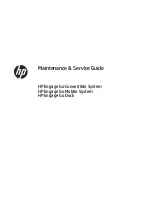
page 16
IRIS-4 Technical Reference Manual.docx 12/01/2023
4.2.2.3
Mounting the 4xx & 6xx
Choose a suitable location, considering the routing of both power and terminal interface cables, within the
alarm panel or in a separate enclosure. Secure the terminal within the enclosure using the fitted standoffs or
the alternative self-adhesive feet.
Note: For EN50131-10 compliance, you must use the supplied standoff and not the self-adhesive feet.
Position the antenna
Place the antenna appropriately to obtain a strong cellular signal. It is advised to keep the antenna away
from large metal structures.
You can check the signal strength during the configuration process as described in chapter 5. You may have
to reposition the antenna to improve signal reception.
Connect cables
DO NOT INSERT THE SIM CARD into its holder until you have made all the connections and carried out a
network scan. See section 6.7.2 “Run network scan”.
4.2.4.1
Cables
Depending on which type of communications are to be used, connect these cables to the PCB:
Ethernet enabled systems Connect the ETH 1 connector using the Ethernet cable to the local IP router/switch
or socket allocated for the LAN/WAN network IP connection.
Cellular enabled systems Fit the supplied T-bar cellular antenna to the cellular antenna connector but do not
fix in place until after performing the network scan.
If needed, the antenna on the 160 can be repositioned outside the plastic housing
using knockouts in the top cover.
Dial port
This is a two-wire connection to the PSTN output of the panel.
Pin Inputs
For pin input connections, see section 6.13 “Pin inputs”.
4.2.4.2
Serial connections
These connections are for panels using serial communication to the terminal.
Note: For alternative selections for third-party panels, use the Settings option in the Installers Menu.
4.2.4.2.1
RS485 connections (Honeywell Galaxy or Risco ProSys)
Where fitted, you can use the screw terminal blocks or the 4-pin header. The connections for the screw
terminals are:
I RS485 screw
terminals
Honeywell Galaxy
Data Bus terminal
Risco ProSys Bus1
terminal
0V (Power)
Galaxy (-)
Com
VIN (Power)
Galaxy (+)
AUX
A
Galaxy (A)
YEL
B
Galaxy (B)
GRN
















































